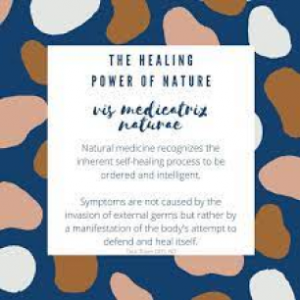Mindfulness meditation is a powerful technique that encourages individuals to focus on the present moment, fostering an increased awareness of their thoughts, feelings, and surroundings. It roots itself in ancient Eastern traditions, offering a way to attain mental clarity and emotional balance. This practice isn’t limited to a particular location, and it’s gaining popularity far beyond the boundaries of its origins.
The Impact of Mindfulness on Mental Clarity
One of the most remarkable aspects of mindfulness meditation is its profound effect on mental clarity. By training your mind to remain fully present and attentive, you can experience a significant improvement in your ability to concentrate, analyze, and make decisions. The clutter of a busy mind dissipates, making room for a heightened state of focus.
Mindfulness meditation’s impact on mental clarity can be likened to a clean slate for your thoughts. When distractions are minimized, your cognitive abilities are optimized. This enhanced clarity allows you to approach tasks with a renewed sense of purpose and efficiency.
Cultivating Emotional Well-Being
In addition to sharpening mental clarity, mindfulness meditation is a potent tool for enhancing emotional well-being. It provides a safe space to observe and acknowledge your emotions without judgment. As you develop this capacity, you become more adept at managing stress, anxiety, and negative emotions.
Through mindfulness meditation, you learn to navigate the intricate landscape of your emotions. This awareness allows you to respond to challenges with resilience and empathy. By fostering a deep understanding of your emotional responses, you can develop the skills to regulate your reactions and maintain emotional equilibrium.
Mindfulness Meditation Techniques
Guided Meditation
One of the most accessible ways to begin your mindfulness meditation journey is through guided meditation. This method often involves listening to a trained practitioner who leads you through various mindfulness exercises. These exercises can focus on your breath, body sensations, or visualizations, helping you build your skills over time.
Body Scan
The body scan technique involves directing your attention to different parts of your body, starting from your toes and gradually moving upward. This practice enables you to develop a profound connection with your body, uncovering areas of tension and learning to release them.
Mindful Breathing
Mindful breathing is at the core of many meditation practices. It involves paying close attention to your breath, observing each inhale and exhale without trying to change or control it. This technique is an excellent way to anchor your awareness in the present moment.
Loving-Kindness Meditation
Loving-kindness meditation, also known as “Metta,” is a practice that focuses on generating feelings of compassion and love, first for yourself and then for others. This technique can be particularly powerful in cultivating positive emotions and emotional well-being.
Integrating Mindfulness into Daily Life
Mindful Eating
One of the simplest ways to incorporate mindfulness into your daily routine is through mindful eating. When you eat with full awareness, savoring each bite, you not only enhance your connection with food but also your overall sense of well-being.
Mindful Walking
Mindful walking is a practice of paying attention to each step you take, your breathing, and the sensations in your body as you move. This practice can be done anywhere, and it’s an excellent way to infuse mindfulness into your day.
Mindful Work
Mindfulness can also be applied to your work life. By practicing mindfulness in the workplace, you can improve your focus, creativity, and decision-making. Mindful work practices can help reduce stress and enhance your overall productivity.
The Science Behind Mindfulness Meditation
Modern scientific research supports the age-old wisdom of mindfulness meditation. Studies have shown that engaging in regular mindfulness practices can lead to structural changes in the brain, particularly in areas associated with emotional regulation and cognitive function.
Additionally, mindfulness has been found to reduce stress, lower blood pressure, and improve sleep quality. It can also boost your immune system and contribute to a sense of overall well-being.
Dallas Naturopath: Your Partner in Mindful Wellness
If you’re seeking expert guidance on integrating mindfulness meditation into your life, consider consulting a naturopath. These healthcare professionals have a deep understanding of holistic well-being and can offer personalized advice on how to incorporate mindfulness into your wellness journey.
In conclusion, mindfulness meditation is a powerful tool for enhancing mental clarity and emotional well-being. Its impact on your daily life can be transformative, helping you achieve a profound sense of balance and tranquility. By exploring the various techniques and integrating mindfulness into your daily routine, you can unlock its full potential. If you’re in the Dallas area, reach out to a natural doctor to receive expert guidance on your mindful wellness journey. Embrace the power of mindfulness and embark on a path to a more balanced and harmonious life.
This comprehensive guide has provided an in-depth exploration of mindfulness meditation, its techniques, benefits, and how it can be integrated into your daily life. We hope this article serves as a valuable resource on your journey to achieving mental clarity and emotional well-being through mindfulness.






